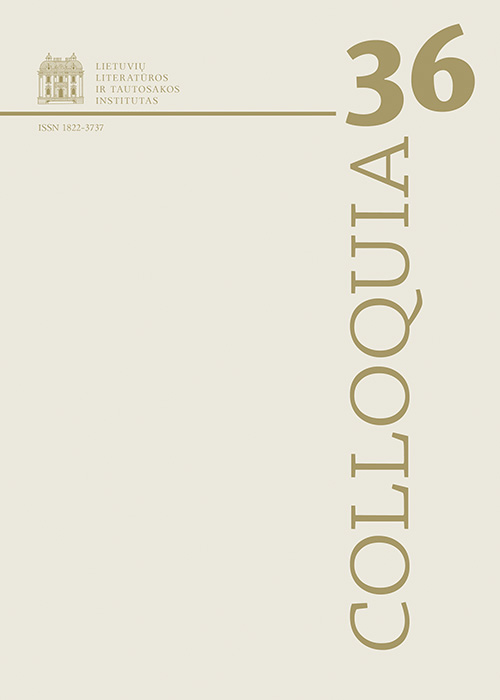Marcelijus Martinaitis’s Cultural “Crafting”
Abstract
From a theoretical perspective, literary anthropologists (e.g., Stephen Greenblatt, Clifford Geertz) view poems, letters, and social behavior as cultural documents that are valuable in their own right; their careful reading can unpack a certain image or trope that functions as a self-interpretive concept in a culture. Reading Martinaitis’s text in this way reveals the poet’s sociocultural and aesthetic stance. The author of the article proposes that this stance can be seen as an instance of anthropological poetics, which she defines as poetry’s synergistic working on aesthetic levels and within social life. She sees poetry, on the other hand, as one of numerous and equivalent cultural modes of being which are capable of compensating for actual social practices.
The images of woodworking, carpentry, and craftsmanship appear repeatedly in Martinaitis’s text. Martinaitis crafts his poetic world like an ensemble of wooden sculptures or a collage of objects. The author comes to the conclusion that Martinaitis’s poetry functions as a substitute for an inherited cultural movement – the practice of craftsmanship. This enables her to discuss Martinaitis’s cultural stance using Hannah Arendt’s concept of homo faber.
Downloads
Most read articles by the same author(s)
- Akvilė Rėklaitytė, Aesthetic Views of a 20th-century Modernist in a Time Trap , Colloquia: Vol. 53 (2024): Colloquia
- Akvilė Rėklaitytė, The poetry of Atgimimas. Who Called the Nation and Who Led it? , Colloquia: Vol. 47 (2021)
- Akvilė Rėklaitytė, The Identity of the Lyric Subject in Marcelijus Martinaitis’ Collection of Poems K.B. Įtariamas , Colloquia: Vol. 32 (2014)
- Akvilė Rėklaitytė, Audronė Barūnaitė-Willeke, „Man literatūra yra ėjimas į mūsų bendrą kultūrą“. Lietuvių išeivijos literatūrologę Audronę Barūnaitę-Willeke kalbina Akvilė Rėklaitytė , Colloquia: Vol. 32 (2014)
- Akvilė Rėklaitytė, What is the Poet Writing on a Scrap of Paper? , Colloquia: Vol. 41 (2018)
